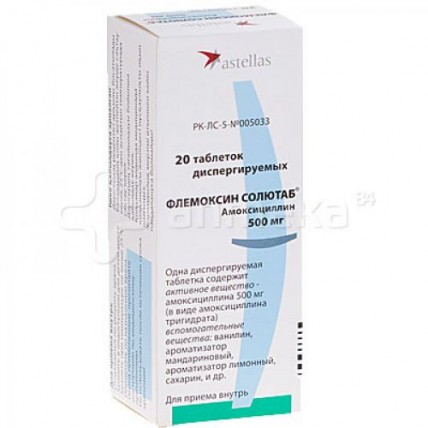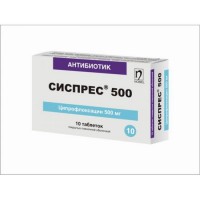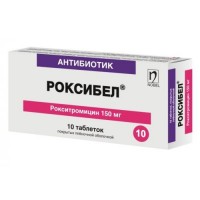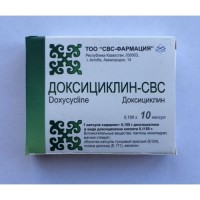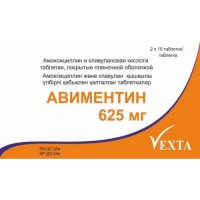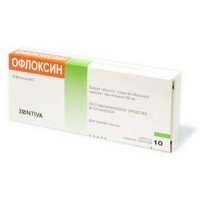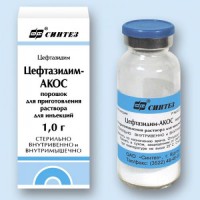Flemoxin Solutab 500 mg 20s dispersing tablets
- $17.80
Out Of Stock
The instruction for medical use
of Solyutab® Flemoksin medicine
the Trade name
Flemoksin of Solyutab®
the International unlicensed
name Amoxicillin Dosage Form
of the Tablet the dispersed 125 mg, 250 mg, 500 mg, 1000 mg
Structure
One tablet contains
active agent: amoxicillin in the form of amoxicillin of trihydrate
of 125 mg, 250 mg, 500 mg, 1000 mg
excipients: the cellulose dispersed, cellulose microcrystalline, krospovidon, vanillin, fragrance tangerine, fragrance lemon, saccharin, magnesium stearate.
The description
of the Tablet from white till light yellow color, an oval form with a logo of firm and digital designation on one party (125 mg – 231, 250 mg – 232, 500 mg – 234, 1000 mg – 236) and risky, on other party.
Pharmacotherapeutic group
Antimicrobial drugs for system use. Beta laktamnye antibacterial drugs. Penicillin of a broad spectrum of activity. Amoxicillin.
The ATX J01CA04 code
The pharmacological
Pharmacokinetics Absorption Later properties of intake amoxicillin is soaked up quickly and almost completely (about 93%), kislotoustoychiv. Meal practically does not influence drug absorption. The maximum concentration of active agent in plasma is observed in 1-2 h. After intake of 500 mg of amoxicillin the maximum concentration of active agent making 5 mkg/ml is noted in blood plasma in 2 hours. At increase or reduction of a dose of drug twice the maximum concentration in blood plasma also changes twice.
Distribution
About 20% of amoxicillin contacts proteins of plasma. Amoxicillin well gets into mucous membranes, a bone tissue, intraocular liquid and a phlegm in therapeutic effective concentration. Concentration of amoxicillin in bile exceeds its concentration in blood plasma by 2-4 times. In amniotic liquid and funic vessels the concentration of amoxicillin makes 25-30% of its level in blood plasma of the pregnant woman. Amoxicillin badly gets through a blood-brain barrier, however at inflammation of a meninx the concentration in cerebrospinal fluid makes about 20% of concentration in blood plasma.
Metabolism
Amoxicillin is partially metabolized in a liver, the majority of its metabolites have no microbiological activity.
Removal
Amoxicillin eliminirutsya mainly by kidneys, about 80% by canalicular excretion, 20% - by means of glomerular filtration. In the absence of a renal failure the elimination half-life of amoxicillin makes 1-1.5 h. At premature, 6 months – 3-4 h are younger than newborns and children.
The pharmacokinetics in special clinical cases
Elimination half-life of amoxicillin does not change in an abnormal liver function.
A pharmacodynamics
Flemoksin Solyutab® - a bactericidal acid resisting antibiotic of a broad spectrum of activity from group of semi-synthetic penicillin. Bacillus anthracis, Listeria monocytogenes, Helicobacter pylori is active concerning the gram-positive and gram-negative microorganisms, such as Streptococcus pyogenes, Streptococcus pneumoniae, Clostridium tetani, Clostridium welchii, Neisseria gonorrhoeae, Neisseria meningitidis, Staphylococcus aureus (which are not developing beta lactamelements). Escherichia coli, Proteus mirabilis, Salmonella typhi, Shigella sonnei, Vibrio cholerae is less active concerning Enterococcus faecalis. It is not active concerning the microorganisms producing beta lactamelements, Pseudomonas spp., an indole - positive Proteus spp., Serratia spp., Enterobacter spp.
Indications
- infections of respiratory organs
- infections of bodies of an urinogenital system
- an infection of bodies of digestive tract
- an infection of skin and soft tissues
the Route of administration and doses
use Drug inside to or after meal. The tablet can be swallowed entirely, to divide into parts or to chew, having washed down with a glass of water and also it is possible to part in water with formation of syrup (in 20 ml) or suspensions (in 100 ml) with pleasant fruit taste.
The dose is established individually, taking into account weight of a course of the disease, age of the patient. In case of infectious and inflammatory diseases easy and moderately severe use of drug according to the following scheme is recommended:
To adults and children 9 years are more senior appoint 500 - 750 mg of 2 times/days or on 375 (one and a half tablets on 250 mg) - 500 mg of 3 times/days. The minimum single dose of 375 mg (one and a half tablets on 250 mg), the maximum daily 1500 mg.
To children from 3 to 9 years appoint on 375 mg (one and a half tablets on 250 mg) 2 times/days or on 250 mg of 3 times/days. Minimum single dose of 250 mg, maximum daily 750 mg.
To children aged from 1 up to 3 years appoint 250 mg of 2 times/days or on
125 mg of 3 times/days. Minimum single dose of 125 mg, maximum daily 500 mg.
The daily dose of drug for children makes 30-60 mg/kg/days, divided into 2-3 receptions. Minimum single dose of 10 mg/kg, maximum daily 60 mg/kg.
At treatment of heavy infections and such diseases as, acute average otitis, triple reception is preferable.
In chronic diseases, recurrent infections and infections of a heavy course the dose of drug can be increased: the adult appoint 750 mg - 1 g 3 times/days, the minimum single dose of 750 mg, maximum daily 3 g, to children of 60 mg/kg/days divided into 3 receptions, the minimum single dose of 20 mg/kg, maximum daily 60 mg/kg.
In acute uncomplicated gonorrhea appoint 3 g of drug in 1 reception in combination with 1 g of a probenetsid.
To patients with a renal failure at clearance of creatinine of 15-40 ml/min. the interval between receptions is increased up to 12 h, at KK lower than 10 ml/min. reduce a dose of drug to 15-50%, at an anury – the maximum dose of 2 g/days.
In case of infections easy and moderately severe courses take the drug within 5-7 days. However in the infections caused by Streptococcus pyogenes, duration of treatment has to be not less than 10 days.
At treatment of chronic diseases, infections of a heavy course of a dose of drug have to be defined by a clinical picture of a disease. Administration of drug needs to be continued during 48 h after disappearance of symptoms of a disease.
Side effects
Often
- allergic skin reactions (makulopapulezny rash)
it is rare
- change of taste
- nausea, vomiting, diarrhea, an anal itching
- a multiformny exudative erythema (Stephens-Johnson's syndrome)
- pseudomembranous and hemorrhagic colitis
Very seldom
- interstitial nephrite
Are possible
- an agranulocytosis, a neutropenia, thrombocytopenia, hemolytic anemia
- specific makulopapulezny rash
In some cases
- moderate increase in activity of hepatic transaminases
- an acute anaphylaxis
- a Quincke's disease
of the Contraindication
- hypersensitivity to drug and another beta laktamnym
to antibiotics
- an infectious mononucleosis and a lymphoid leukosis
Medicinal interactions
Probenetsid, phenylbutazone, oksifenbutazon and, to a lesser extent, acetylsalicylic acid, indometacin and sulfinpirazol suppress tubular secretion of penicillin, extending plasma elimination half-life and increasing level in plasma. Amoxicillin is applied in therapy in combination with probenetsidy.
Bactericidal antibiotics (including aminoglycosides, cephalosporins, Vancomycinum, rifampicin) at a concomitant use have sinergidny effect. The antagonism at reception with some bacteriostatic drugs is possible (for example, tetracyclines, macroleads chloramphenicol, streptocides). The concomitant use with estrogensoderzhashchy oral contraceptives can lead to decrease in their efficiency and increase in risk of developing acyclic bleedings. Co-administration with Allopyrinolum increases the frequency of skin reactions.
The special
instructions Presence of an Erythrosis in the Anamnesis Solyutab® is not a contraindication for Flemoksin's appointment.
Cross stability with drugs of a penicillinic row and cephalosporins is possible.
As well as at use of other drugs of a penicillinic row, development of superinfection is possible.
Appearance of the heavy diarrhea characteristic of pseudomembranous colitis is the indication for drug withdrawal.
Against the background of combination therapy with metronidazole it is impossible to take alcohol.
Use in pediatrics
is not recommended use for children till 1 year. Children up to 9 years are not recommended to apply Flemoksin's dosage of Солютаб® 500 mg and 1000 mg.
Pregnancy and the period of a lactation
Use at pregnancy perhaps after medical assessment of risk/advantage of treatment.
In small amounts drug is emitted with breast milk that can lead to development of the phenomena of a sensitization in the child.
Influence of drug on ability to run motor transport and other potentially dangerous mechanisms
does not influence
Overdose
Symptoms: nausea, vomiting, diarrhea, disturbance of water and electrolytic balance.
Treatment: gastric lavage, activated carbon, salt depletive, measures for recovery of water and electrolytic balance.
A form of release and packing
On 5 tablets in blister strip packaging from a film of polyvinylchloride and aluminum foil. On 4 planimetric packs together with the instruction for medical use in the state and Russian languages place in a cardboard pack.
To Store storage conditions in the place protected from light, at a temperature not above 25 °C.
To store out of children's reach!
Not to use a period of storage of 5 years after an expiration date!
Prescription status
According to the prescription
the Producer Astellas of Pharm B.V. Europe, Silviusveg 62, 2333 VE, Leiden, Netherlands
the Owner of the registration certificate
Astellas of Pharm B.V. Europe, Silviusveg 62, 2333 VE, Leiden, Netherlands
the Address of the organization accepting in the territory of the Republic of Kazakhstan claims from consumers on quality of products
Representative office Astellas of Pharm B.V. Europe in RK
Almaty, Al-Farabi Ave. 15, the Centre Party of Finland of Nurla Tau the building 4B. office 20
ph.: +7 (727) 311-13-90, fax: +7 (727) 311-13-89
To develop
of Solyutab® Flemoksin medicine
the Trade name
Flemoksin of Solyutab®
the International unlicensed
name Amoxicillin Dosage Form
of the Tablet the dispersed 125 mg, 250 mg, 500 mg, 1000 mg
Structure
One tablet contains
active agent: amoxicillin in the form of amoxicillin of trihydrate
of 125 mg, 250 mg, 500 mg, 1000 mg
excipients: the cellulose dispersed, cellulose microcrystalline, krospovidon, vanillin, fragrance tangerine, fragrance lemon, saccharin, magnesium stearate.
The description
of the Tablet from white till light yellow color, an oval form with a logo of firm and digital designation on one party (125 mg – 231, 250 mg – 232, 500 mg – 234, 1000 mg – 236) and risky, on other party.
Pharmacotherapeutic group
Antimicrobial drugs for system use. Beta laktamnye antibacterial drugs. Penicillin of a broad spectrum of activity. Amoxicillin.
The ATX J01CA04 code
The pharmacological
Pharmacokinetics Absorption Later properties of intake amoxicillin is soaked up quickly and almost completely (about 93%), kislotoustoychiv. Meal practically does not influence drug absorption. The maximum concentration of active agent in plasma is observed in 1-2 h. After intake of 500 mg of amoxicillin the maximum concentration of active agent making 5 mkg/ml is noted in blood plasma in 2 hours. At increase or reduction of a dose of drug twice the maximum concentration in blood plasma also changes twice.
Distribution
About 20% of amoxicillin contacts proteins of plasma. Amoxicillin well gets into mucous membranes, a bone tissue, intraocular liquid and a phlegm in therapeutic effective concentration. Concentration of amoxicillin in bile exceeds its concentration in blood plasma by 2-4 times. In amniotic liquid and funic vessels the concentration of amoxicillin makes 25-30% of its level in blood plasma of the pregnant woman. Amoxicillin badly gets through a blood-brain barrier, however at inflammation of a meninx the concentration in cerebrospinal fluid makes about 20% of concentration in blood plasma.
Metabolism
Amoxicillin is partially metabolized in a liver, the majority of its metabolites have no microbiological activity.
Removal
Amoxicillin eliminirutsya mainly by kidneys, about 80% by canalicular excretion, 20% - by means of glomerular filtration. In the absence of a renal failure the elimination half-life of amoxicillin makes 1-1.5 h. At premature, 6 months – 3-4 h are younger than newborns and children.
The pharmacokinetics in special clinical cases
Elimination half-life of amoxicillin does not change in an abnormal liver function.
A pharmacodynamics
Flemoksin Solyutab® - a bactericidal acid resisting antibiotic of a broad spectrum of activity from group of semi-synthetic penicillin. Bacillus anthracis, Listeria monocytogenes, Helicobacter pylori is active concerning the gram-positive and gram-negative microorganisms, such as Streptococcus pyogenes, Streptococcus pneumoniae, Clostridium tetani, Clostridium welchii, Neisseria gonorrhoeae, Neisseria meningitidis, Staphylococcus aureus (which are not developing beta lactamelements). Escherichia coli, Proteus mirabilis, Salmonella typhi, Shigella sonnei, Vibrio cholerae is less active concerning Enterococcus faecalis. It is not active concerning the microorganisms producing beta lactamelements, Pseudomonas spp., an indole - positive Proteus spp., Serratia spp., Enterobacter spp.
Indications
- infections of respiratory organs
- infections of bodies of an urinogenital system
- an infection of bodies of digestive tract
- an infection of skin and soft tissues
the Route of administration and doses
use Drug inside to or after meal. The tablet can be swallowed entirely, to divide into parts or to chew, having washed down with a glass of water and also it is possible to part in water with formation of syrup (in 20 ml) or suspensions (in 100 ml) with pleasant fruit taste.
The dose is established individually, taking into account weight of a course of the disease, age of the patient. In case of infectious and inflammatory diseases easy and moderately severe use of drug according to the following scheme is recommended:
To adults and children 9 years are more senior appoint 500 - 750 mg of 2 times/days or on 375 (one and a half tablets on 250 mg) - 500 mg of 3 times/days. The minimum single dose of 375 mg (one and a half tablets on 250 mg), the maximum daily 1500 mg.
To children from 3 to 9 years appoint on 375 mg (one and a half tablets on 250 mg) 2 times/days or on 250 mg of 3 times/days. Minimum single dose of 250 mg, maximum daily 750 mg.
To children aged from 1 up to 3 years appoint 250 mg of 2 times/days or on
125 mg of 3 times/days. Minimum single dose of 125 mg, maximum daily 500 mg.
The daily dose of drug for children makes 30-60 mg/kg/days, divided into 2-3 receptions. Minimum single dose of 10 mg/kg, maximum daily 60 mg/kg.
At treatment of heavy infections and such diseases as, acute average otitis, triple reception is preferable.
In chronic diseases, recurrent infections and infections of a heavy course the dose of drug can be increased: the adult appoint 750 mg - 1 g 3 times/days, the minimum single dose of 750 mg, maximum daily 3 g, to children of 60 mg/kg/days divided into 3 receptions, the minimum single dose of 20 mg/kg, maximum daily 60 mg/kg.
In acute uncomplicated gonorrhea appoint 3 g of drug in 1 reception in combination with 1 g of a probenetsid.
To patients with a renal failure at clearance of creatinine of 15-40 ml/min. the interval between receptions is increased up to 12 h, at KK lower than 10 ml/min. reduce a dose of drug to 15-50%, at an anury – the maximum dose of 2 g/days.
In case of infections easy and moderately severe courses take the drug within 5-7 days. However in the infections caused by Streptococcus pyogenes, duration of treatment has to be not less than 10 days.
At treatment of chronic diseases, infections of a heavy course of a dose of drug have to be defined by a clinical picture of a disease. Administration of drug needs to be continued during 48 h after disappearance of symptoms of a disease.
Side effects
Often
- allergic skin reactions (makulopapulezny rash)
it is rare
- change of taste
- nausea, vomiting, diarrhea, an anal itching
- a multiformny exudative erythema (Stephens-Johnson's syndrome)
- pseudomembranous and hemorrhagic colitis
Very seldom
- interstitial nephrite
Are possible
- an agranulocytosis, a neutropenia, thrombocytopenia, hemolytic anemia
- specific makulopapulezny rash
In some cases
- moderate increase in activity of hepatic transaminases
- an acute anaphylaxis
- a Quincke's disease
of the Contraindication
- hypersensitivity to drug and another beta laktamnym
to antibiotics
- an infectious mononucleosis and a lymphoid leukosis
Medicinal interactions
Probenetsid, phenylbutazone, oksifenbutazon and, to a lesser extent, acetylsalicylic acid, indometacin and sulfinpirazol suppress tubular secretion of penicillin, extending plasma elimination half-life and increasing level in plasma. Amoxicillin is applied in therapy in combination with probenetsidy.
Bactericidal antibiotics (including aminoglycosides, cephalosporins, Vancomycinum, rifampicin) at a concomitant use have sinergidny effect. The antagonism at reception with some bacteriostatic drugs is possible (for example, tetracyclines, macroleads chloramphenicol, streptocides). The concomitant use with estrogensoderzhashchy oral contraceptives can lead to decrease in their efficiency and increase in risk of developing acyclic bleedings. Co-administration with Allopyrinolum increases the frequency of skin reactions.
The special
instructions Presence of an Erythrosis in the Anamnesis Solyutab® is not a contraindication for Flemoksin's appointment.
Cross stability with drugs of a penicillinic row and cephalosporins is possible.
As well as at use of other drugs of a penicillinic row, development of superinfection is possible.
Appearance of the heavy diarrhea characteristic of pseudomembranous colitis is the indication for drug withdrawal.
Against the background of combination therapy with metronidazole it is impossible to take alcohol.
Use in pediatrics
is not recommended use for children till 1 year. Children up to 9 years are not recommended to apply Flemoksin's dosage of Солютаб® 500 mg and 1000 mg.
Pregnancy and the period of a lactation
Use at pregnancy perhaps after medical assessment of risk/advantage of treatment.
In small amounts drug is emitted with breast milk that can lead to development of the phenomena of a sensitization in the child.
Influence of drug on ability to run motor transport and other potentially dangerous mechanisms
does not influence
Overdose
Symptoms: nausea, vomiting, diarrhea, disturbance of water and electrolytic balance.
Treatment: gastric lavage, activated carbon, salt depletive, measures for recovery of water and electrolytic balance.
A form of release and packing
On 5 tablets in blister strip packaging from a film of polyvinylchloride and aluminum foil. On 4 planimetric packs together with the instruction for medical use in the state and Russian languages place in a cardboard pack.
To Store storage conditions in the place protected from light, at a temperature not above 25 °C.
To store out of children's reach!
Not to use a period of storage of 5 years after an expiration date!
Prescription status
According to the prescription
the Producer Astellas of Pharm B.V. Europe, Silviusveg 62, 2333 VE, Leiden, Netherlands
the Owner of the registration certificate
Astellas of Pharm B.V. Europe, Silviusveg 62, 2333 VE, Leiden, Netherlands
the Address of the organization accepting in the territory of the Republic of Kazakhstan claims from consumers on quality of products
Representative office Astellas of Pharm B.V. Europe in RK
Almaty, Al-Farabi Ave. 15, the Centre Party of Finland of Nurla Tau the building 4B. office 20
ph.: +7 (727) 311-13-90, fax: +7 (727) 311-13-89
To develop
